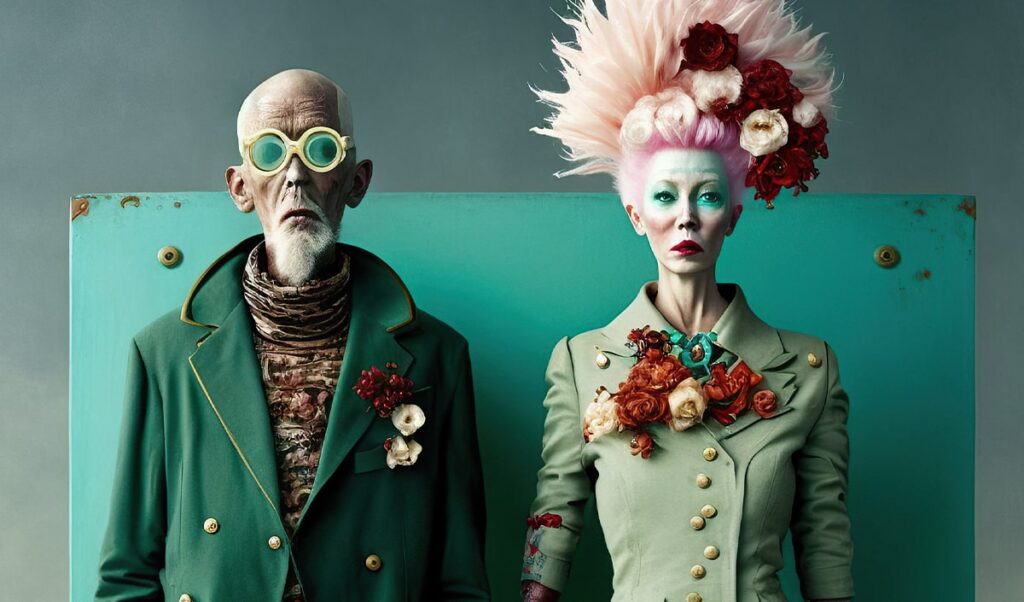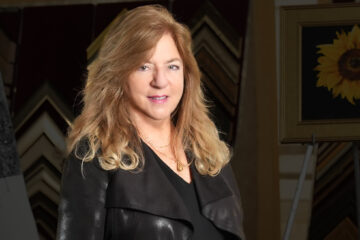Jonas Peterson: Art Reimagined By Ai
Photographer Jonas Peterson explores new media and pushes the boundaries between fiction and reality as he works with computer technologies to create lifelike art work that will have you second-guessing what is real.
With over 25 years of experience in the arts, including his work as a writer, filmmaker, creative director, photographer, artist, Jonas Peterson uses new AI techniques in his latest work to create unique and moving pieces of art. AI art is generated with the assistance of artificial intelligence. Peterson uses this and other computer software to create these works. Using his direction the artificial intelligence system goes to work, and after some trial and error the AI program is able to understand the goal and Peterson begins curating to create his ultimate vision. In a process that Peterson refers to as being similar to that of a director, he works in collaboration with the real and artificial brain. His current collection, “Youth Is Wasted on the Young,” is a comment on ageism and a celebration of the old. Through this collection the photographer and storyteller shows the pride and confidence of those who have lived longer and experienced more than most of us. The collection has been an incredible success — since “Youth Is Wasted On The Young” was published online it has been shared over 10 million times.
“I COMBINE EVERYTHING I’VE LEARNED AND PUT IT TO USE, BUT I’M NOT INTERESTED IN LIFTING THE VEIL AND SHARING EXACTLY WHAT IT IS I DO. DISSECTING SOMETHING USUALLY KILLS IT.”
Q: Where did the inspiration come from for using AI for this style of photography?
A: I have always experimented a lot with various techniques in my work. I use analogue, instant and digital cameras to produce what I do. When AI tools came along, I started using them as other image-creation tools, because, to me, that’s all they are — tools to tell a story or evoke emotion in the viewer. I find questions about gear and tools a little pointless. I try to focus on what I want to say; the only thing the gear does is get in the way of realizing what I want to create.
Q: Can you share a bit of the process with us?
A: I’m a photographer, but I have a background in writing and fine art. I combine everything I’ve learned and put it to use, but I’m not interested in lifting the veil and sharing exactly what it is I do. Dissecting something usually kills it.
Q: What has been the reaction to these collections?
A: It has been absolutely incredible. The outpouring of love has far outweighed the few people who don’t agree with the process. Since I first shared them in November, I’ve been contacted by museums, art collectors and curators from all around the world, in addition to all the people who love them with all their heart.
Q: We would like to share “Youth Is Wasted on the Young.” Can you walk us through some of the process?
A: I can, but I won’t. I want people to enjoy what they’re eating — sharing what pan I used to fry the fish isn’t interesting to me.
Q: What past experiences have influenced you as a photographer, artist and writer?
A: I’ve been working in creative and commercial arts for over 25 years as an artist, photographer, creative director, writer and filmmaker. Each experience is part of the patchwork that make up my voice and expression.
Q: What emotions do you hope your work will deliver to audiences?
A: My main goal with everything I do is to make people react and feel something. For this project, I wanted to make people feel joy and excitement, mostly. If you don’t feel something, I have failed what I came here for.
Q: Do you have any stories about collectors of your work that surprised you?
A: I have been contacted by everything from world-famous actors and entrepreneurs to people with stage 4 cancer who just want to bring some joy back into their final stages of life. It has been wonderful and very humbling.
Q: What can you tell us about your private life that is a complement to your work?
A: I have taken thousands of portraits of people over the years. I’ve never really been interested in the standard definition of beauty, I’m interested in the mess of being human. My life has been a mess; isn’t it, deep down, for everyone?
Q: What is your definition of youth?
A: Unrestricted play.
Q: If you could change anything about life, what would it be?
A: If I’d change anything about my path, I wouldn’t be where I am today, so I wouldn’t necessarily change a thing. I’d be kinder to myself and the people I’ve hurt along the way.
Q: What is your definition of happiness?
A: Being surrounded by people I love and who love me back. I’ve learned to never rely on anyone else for happiness, it comes from within; it’s a choice you have to make and it takes work to get there.
Q: What is your dolce vita (good life)?
A: Eating and drinking with people I love. When I don’t cook for myself, I travel around the world sampling food wherever I go. A calvados in France, some artichokes in spring in Italy, the simple things.
jonaspetersonprintshop.com
@jonaspeterson_ai
INTERVIEW BY MICHELLE ZERILLO-SOSA






















































































